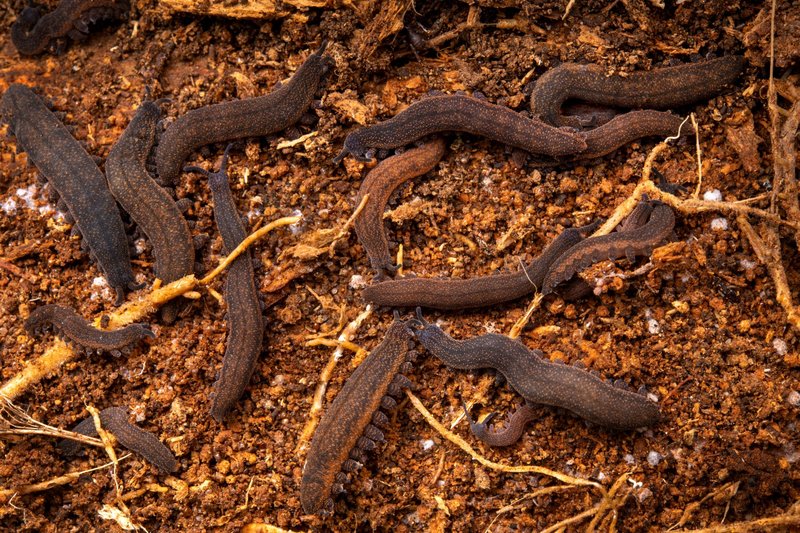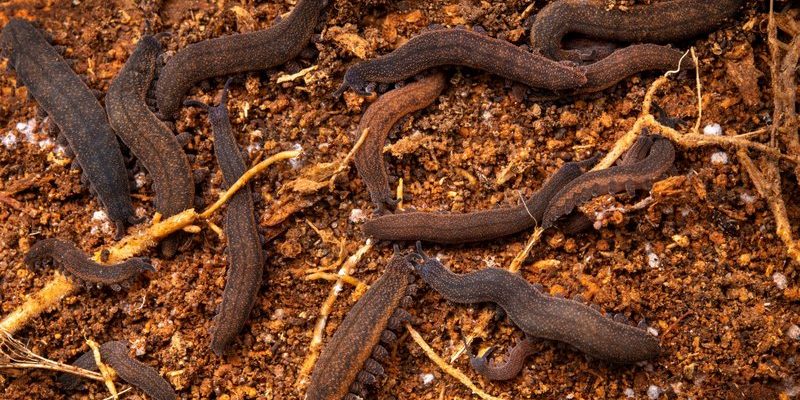
Velvet worms, also known as onychophorans, resemble something between a caterpillar and a slug—definitely not what you’d expect to find in discussions about soil health. But these creatures are more than just interesting to look at. They contribute to the overall health of soil in various ways, helping to decompose organic material and promote nutrient cycling. So, let’s dive into why velvet worms are essential and how they’re being recognized in soil health studies.
What Are Velvet Worms?
To start, let’s get to know velvet worms a bit better. These creatures are part of a small group of invertebrates that can be found in moist, tropical environments around the world. Unlike some of their more famous cousins, like earthworms, velvet worms have a unique appearance, with soft, segmented bodies and multiple pairs of legs.
You might wonder how these little beings fit into the soil ecosystem. They are **predators**, feeding on small insects and other invertebrates. This predation helps control the population of these smaller creatures, maintaining balance in the soil ecosystem. Their **soft bodies** allow them to burrow easily into the ground, which means they can thrive at different soil depths. This adaptability is crucial for their role in the health of the soil.
Not only do they help manage pest populations, but velvet worms also assist in breaking down organic matter. As they feed and move through the soil, they help decompose leaves and other plant materials, returning essential nutrients to the earth. It’s like they’re the cleanup crew of the soil, ensuring everything stays fresh and fertile.
The Role of Velvet Worms in Soil Health
Now that we have a basic understanding of what velvet worms are, let’s explore their specific contributions to soil health in more depth. One of the main roles they play is in nutrient cycling. When these worms consume organic matter, they don’t just eat it; they break it down and transform it into forms that plants can use.
Think of them as nature’s recyclers. When velvet worms digest their food, they excrete nutrients back into the soil, enriching it and making it more fertile for plants. This process is vital, especially in ecosystems where the soil can become depleted of nutrients over time.
Additionally, velvet worms help improve soil structure. Their burrowing activities create channels in the soil, allowing air and water to penetrate more easily. This is particularly important for root growth and overall plant health. If the soil is compacted, plants struggle to thrive, but with velvet worms around, the soil becomes more aerated and accessible.
Importance of Velvet Worms in Ecosystem Stability
Ecosystem stability is all about balance. Every organism has a role, and velvet worms are no exception. They contribute to the **biodiversity** of soil, meaning they help maintain a variety of life forms that interact with one another. This diversity is essential for resilience against environmental changes, diseases, or pests.
Consider how a diverse community in soil can act as a buffer against pests. With velvet worms managing the populations of smaller insects, you reduce the risk of outbreaks that could harm plant life. A balanced ecosystem is less likely to experience sudden shifts, which can be devastating.
In research focused on soil health, scientists have started to include velvet worms as indicators of soil quality. Their presence (or absence) can signal the overall health of the ecosystem. If velvet worms are thriving, it likely means the soil is rich in organic matter and nutrients—which is good news for farmers and gardeners alike.
Current Research on Velvet Worms and Soil Health
Research into velvet worms and their contributions to soil health is still relatively new, but it’s growing rapidly. Scientists are conducting studies to better understand how these worms influence not just soil quality, but also broader ecosystem dynamics.
Many studies focus on how environmental changes, like deforestation or climate change, impact velvet worm populations. If their numbers decline, it could indicate that the soil and local ecosystems are facing challenges. This makes velvet worms a valuable tool for environmental monitoring.
For instance, researchers have looked into the correlation between velvet worm abundance and plant health. They’ve found that richer habitats, which support varied plant life, also support larger populations of velvet worms. This reveals a sort of interconnectedness in the ecosystem, where these worms flourish alongside healthy plant communities.
Challenges Facing Velvet Worm Populations
Despite their importance, velvet worms face threats from habitat loss and climate change. As ecosystems change, these creatures find it harder to survive. For instance, deforestation not only removes their habitat but also affects the soil’s health, making it less favorable for them.
Additionally, climate change can alter moisture levels in the soil, which is crucial for velvet worm survival. They thrive in humid environments, so changes in temperature and precipitation patterns can put their populations at risk.
It’s crucial for researchers and conservationists to monitor these changes to ensure that velvet worm populations don’t decline. By protecting their environments, we’re not just saving one species; we’re benefiting the entire ecosystem.
How to Support Velvet Worms in Your Garden
Now that we know how valuable velvet worms are, you might be wondering how you can help them thrive in your own garden or local area. Here are a few simple tips to foster a friendly environment for these amazing creatures:
- Maintain moisture: Velvet worms love humid environments, so keep your garden well-watered, especially in drier seasons.
- Plant diversity: Plant a variety of species in your garden. This helps create a rich habitat for various organisms, including velvet worms.
- Avoid chemicals: Pesticides and herbicides can be harmful. Opt for organic gardening methods to protect not just velvet worms, but all beneficial insects.
- Mulching: Adding organic mulch can help maintain soil moisture and provide a habitat for velvet worms.
Supporting velvet worms in your garden can lead to healthier soil and more vibrant plant life. It’s a win-win situation!
Final Thoughts on Velvet Worms and Soil Health
In summary, velvet worms may not be the most well-known soil creatures, but they play a critical role in keeping our ecosystems healthy. From nutrient cycling to improving soil structure, their contributions cannot be overlooked. As we face environmental changes, understanding and protecting these delicate creatures becomes even more important.
By promoting healthy environments for velvet worms, we support the entire soil ecosystem. So, whether you’re a seasoned gardener or just someone curious about nature, remember that every little creature counts in the intricate web of life. Let’s give velvet worms the recognition they deserve!

